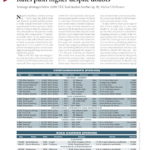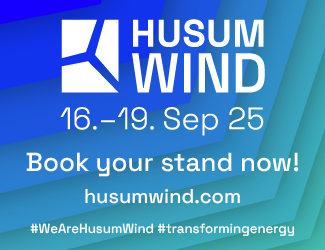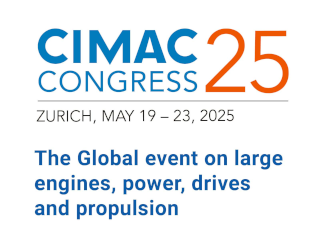Tonnage shortages below 4,000 TEU lead market further up. By Michael Hollmann
Negative headlines continue to heap up – Syria, Iran, the global trade war. However, growth in global container traffic remains brisk[ds_preview] and so does tonnage demand by liner operators. Hence the rise of charter rates for container vessels continued over the past four weeks, with the New Contex up by 7% month-on-month. Most of the improvements were seen at the end of March and start of April as increases slowed down during week 15 (+1.6%) and 16 (+1.0%), with rates for the largest gearless vessels seemingly plateauing after large increases during the first quarter.
Older 8,500TEU ships saw fixing levels in the first half of April firming from 21,000 to 22,500$/d but activity has since waned off. Three ships between 7,500 and 11,000TEU were reportedly seeking employment and a number of units were about to come open. Previously ships got fixed early several weeks or months in advance. So is it a sign of weaker demand or are charterers only testing the nerves of shipowners? On the one hand, the peak season (Q2/Q3) is yet to begin which means that operators still have time to put in place capacity upgrades. On the other hand, brokers argue that network capacities have already been stepped up disproportionately. Newbuilding deliveries alone would cause a rise in operated slot capacity by 7–8% this year if all units are deployed. This would even exceed the continued growth in the container trades – estimated at 4–5% – and probably send freight rates further down. Therefore to protect their financial bottom lines and remain profitable, carroers may decide to cut back capacity by returning charter vessels.
To date, however, there are no signs of that. Carriers might give it a few more months to see how cargo volumes hold up. The other critical factor is demolition: Scrapping slowed to a trickle of the volumes seen last year. Only a dozen ships of 22,000TEU in total got sent to the beaches so far this year, prompting analysts to revise forecasts substantially. The consensus now is that demolition will only reach 100,000 to 200,000TEU this year – less than half the volume scrapped last year. Alphaliner lifted its forecast for fleet growth to 6%, warning that supply side pressure will inevitably increase. In the here and now, rate levels have continued to edge up also for all other types below 8,000TEU. Older 6,000TEU vessels logged improvements from high 15,000’s $ to mid 16,000’s $ or and even 17,000$ for delivery in the Atlantic where tonnage availability is tighter than in Asia.
Trading activity in the panamax segment eased a bit over the past weeks, but owners should be content to see the market for all kinds of panamaxes firmly above 10,000 $ in all regions. Of note, there have been some new service launches along the east/west corridor, supporting tonnage demand.
Arguably, the smaller sectors below 4,000TEU are enjoying the best prospects because they are considered to be less affected by the cascading effect from the growing deployment of ultra large vessels. Especially smaller self-sustained (geared) ships in niche trades seem to be in a safe spot. Geared 3,500TEU ships saw fixing levels reach 11,500$ and so did gearless 2,800/2,700TEU ships delivering in the Med. In the geared 2,500TEU, the upward momentum remained intact, too, with rates approaching 11,000$. The »Oregon Trader« (2,490TEU) already fixed a net rate of around 10,500$.
In the feeder segments (<2,000TEU) owners continued to beat »last done« levels frequently, with high-spec, modern eco units such as gearless Topaz 1700 (»Nordlilly« etc.) achieving an improved $14,400 for medium durations in Asia. Standard geared Wenchong types are rated a mid $10,000’s both in Asia and the Med.
The feeder market in North Europe showed a very favourable development as well, with period demand gaining strength and rate levels for gearless 1,000TEU ice class ships climbing above 8,000€ for periods while operators had to pay as much as 9,000€ per day to cover round trips. In the 700TEU class, rates remained largely unchanged at mid 5,000’s $ in Asia amid ongoing tonnage tightness.
Michael Hollmann

















